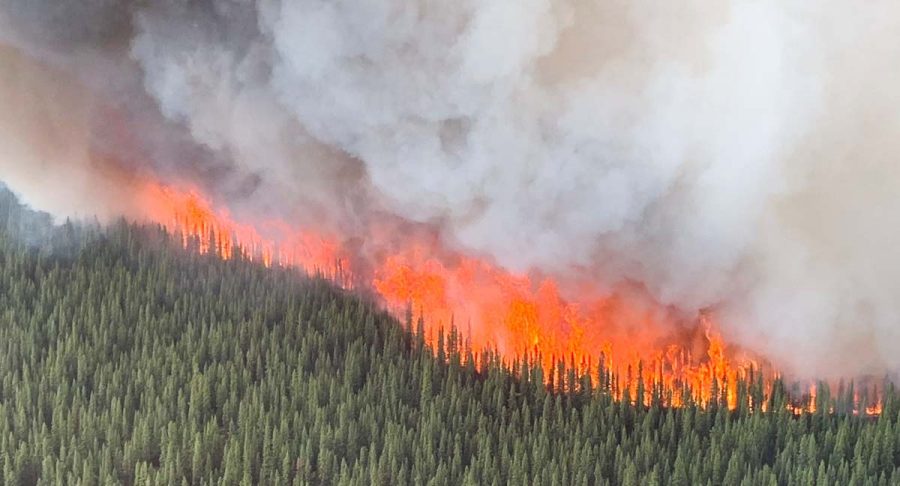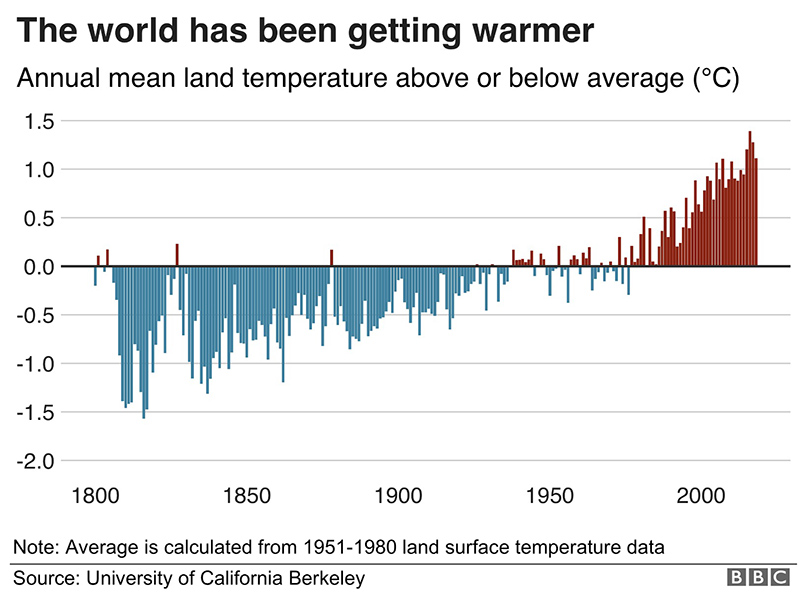
In a study of wildfires in the conterminous United States from 2003 to 2020 researchers found that while fire activity increased during the day in the 18-year period, it increased even more at night.
Heat sensing data from satellites showed significant increasing trends in nighttime wildfire fire activity, with a +54%, +42% and +21% increase in the annual nighttime sum of Fire Radiative Power (FRP), annual nighttime active fire pixel counts, and annual mean nighttime per-pixel values of FRP, respectively, in the latter half of the study period. Activity during the day increased also, with rates of +36%, +31%, and +7% respectively.
Analysis of coincident 1000-hour fuel moistures indicated that as fuels dried out, satellites detected increasingly larger and more intense wildfires with higher probabilities of nighttime persistence.
The information above is from the study “Large wildfire driven increases in nighttime fire activity observed across CONUS from 2003–2020,” by Patrick H. Freeborn, W. Matt Jolly, Mark A. Cochrane, and Gareth Roberts.

The reason wildfires typically exhibit less activity at night is due to diurnal changes in weather. Nighttime generally brings lower temperatures, higher relative humidity, decreasing winds, and higher fuel moistures in light fuels.
But a warming climate with occasional multi-year droughts and higher temperatures can lead to nighttime higher temperatures and lower humidities. Drought will lower the fuel moistures in live and dead vegetation. These changes can result in fuels at night remaining available for significant and continuous fire spread. This is causing wildfires to burn with more intensity, spread more quickly, and have more resistance to control 24 hours a day.

About 15 to 20 years ago firefighters could usually count on wildfire activity slowing significantly at night as long as the wind was not extreme. Night shift crews could make good progress constructing direct fireline near the edge of fires. In the last few years weather and fuel conditions that permit direct attack by ground personnel, day or night, are less common. Fires are getting larger. Megafires that blacken 100,000 acres are no longer rare.
So now what?
As fires show increasing resistance to control we need to ramp up our fuel treatments, including prescribed fires, by a factor of 10. Less than full suppression of carefully selected fires when the season-ending weather event is on the horizon can have a place also, if they are very carefully planned and actively tracked and managed using all of the predictive tools available run by very smart, experienced personnel.
We also need to realize that we will never be able to prevent all wildfires from burning into populated areas, so property owners must realize they have to live with fire, using FireWise principles. Here are six things that need to be done to protect fire-prone communities.
And, community destruction during extreme wildfires is a home ignition problem. Here is an excerpt from the article written by Jack Cohen and Dave Strohmaier:
Uncontrollable extreme wildfires are inevitable; however, by reducing home ignition potential within the Home Ignition Zone we can create ignition resistant homes and communities. Thus, community wildfire risk should be defined as a home ignition problem, not a wildfire control problem. Unfortunately, protecting communities from wildfire by reducing home ignition potential runs counter to established orthodoxy.
We also have to realize that the fire suppression manpower staffing model that was created 50 years ago is obsolete. The agencies that fight wildfires, especially the federal agencies, need to increase the numbers of Interagency Hotshot Crews and engine crews. The crews must be configured and managed to allow personnel to have a reasonable amount of down time at the home unit even during the busiest times of the fire year. They can’t be away from home 90 percent of the time and expect to have a decent work/life balance. One National Forest will begin a pilot program in 2022 increasing the sizes of Hotshot and Engine crews to 30 and 10 people, respectively. This is intended to improve work/life balance and increase the availability of resources.
The reforms in the just-passed infrastructure bill to improve the pay and working conditions of firefighters must be implemented immediately. Slow-walking those improvements, a tactic too often used by the Federal agencies, should not be tolerated.
Technology needs to be adopted to make firefighting more safe and efficient. Firefighters down to the crew supervisor level should have access to real time data about the location of the fire and other firefighting resources 24 hours a day. Communications capabilities need to be robust and bomb proof.
On the afternoon of November 16, 2021 we initiated a 24-hour online poll on Twitter, asking for firefighters’ observations about nighttime wildfire activity.
Question for experienced wildland firefighters.
In the last 7 years on large wildfires, have you seen typical fire activity at night, more nighttime fire activity, or less nighttime fire activity, compared to 8 to 20 years ago?
— Wildfire Today ? (@wildfiretoday) November 16, 2021









